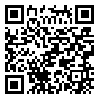Abstract: (12 Views)
Background & Objective: Terrorist incidents involving mass casualties are critical challenges for healthcare systems, particularly in high-risk regions. Hospital preparedness and coordinated clinical response are key determinants in reducing morbidity and mortality. This study aimed to localize the Mass Casualty Management (MCM) protocol and evaluate its effectiveness on the clinical response team at Khatam-Al-Anbia Hospital, Zahedan.
Methods: This was a program development and evaluation study with a quasi-experimental approach. The MCM protocol was adapted based on international guidelines and contextualized to the hospital’s resources, needs, and operational limitations. The educational program was designed and implemented using Simulation-Based Education (SBE) and Team-Based Learning (TBL) for emergency department staff and related units. Data were collected qualitatively through structured observation of team performance, debriefing sessions, and content analysis of participants’ experiences.
Results: Qualitative findings revealed that the localized educational program led to improved team coordination, enhanced clinical decision-making in crisis conditions, strengthened functional integration within the Incident Command System, and increased confidence and preparedness among staff in responding to mass-casualty terrorist events. Participants reported realism, applicability, and contextual suitability of the localized protocol as major strengths of the program.
Conclusion: Localization of the MCM protocol combined with scenario-based clinical training effectively enhances hospital response preparedness for mass-casualty terrorist incidents. Integrating such training into annual hospital education programs and expanding it to other disaster scenarios is recommended.
Methods: This was a program development and evaluation study with a quasi-experimental approach. The MCM protocol was adapted based on international guidelines and contextualized to the hospital’s resources, needs, and operational limitations. The educational program was designed and implemented using Simulation-Based Education (SBE) and Team-Based Learning (TBL) for emergency department staff and related units. Data were collected qualitatively through structured observation of team performance, debriefing sessions, and content analysis of participants’ experiences.
Results: Qualitative findings revealed that the localized educational program led to improved team coordination, enhanced clinical decision-making in crisis conditions, strengthened functional integration within the Incident Command System, and increased confidence and preparedness among staff in responding to mass-casualty terrorist events. Participants reported realism, applicability, and contextual suitability of the localized protocol as major strengths of the program.
Conclusion: Localization of the MCM protocol combined with scenario-based clinical training effectively enhances hospital response preparedness for mass-casualty terrorist incidents. Integrating such training into annual hospital education programs and expanding it to other disaster scenarios is recommended.
Keywords: Mass Casualty Management, Localization, Simulation-Based Education, Team-Based Learning, Hospital Preparedness, Terrorist Incidents
Send email to the article author
| Rights and permissions | |
 |
This work is licensed under a Creative Commons Attribution-NonCommercial 4.0 International License. |







